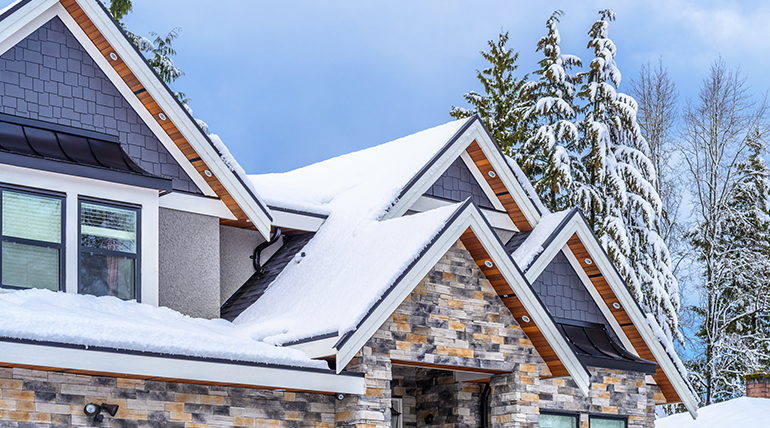|
Winter Weather Brings New Snow & Safety Challenges

Winter in Washington means new outdoor recreational opportunities and icy conditions. Many companies add winter maintenance options to their list of customer service items that can expose employees to hazardous working conditions.
Roof and awning snow removal and gutter maintenance are just a few of the services offered by companies this time of year. It is important that employers train employees to safely perform these types of services.
Avoid snow-covered roofs
Looking for alternatives to accessing snow-covered roofs is always your best option; establishing fall protection on snowy roofs can be very challenging, if not impossible. Workers also risk falling through rotten or unstable underlayments and hidden skylights.
Revisit ladder safety
It’s always wise to revisit ladder safety during company meetings. Falls from ladder-footing kick-outs during muddy or icy ground conditions can generate injuries to your already hard-to-find workforce. Employers should remind employees to secure ladders at the top and bottom under these types of conditions. They should also inspect ladders for ice buildup and cracked or bent rungs.
Employers should document any training and keep it in the file. Should an employee fall and be hospitalized (or worse), Department of Labor and Industries (L&I)—Division of Occupational Safety (DOSH) and Health investigators will ask for this documentation. Whenever possible, use methods to clear ice and snow that don’t require workers on a roof, such as applying de-icing from a ladder or using snow rakes and drag lines from the ground. All of these mitigate risk significantly.
Keep in mind there have been cases where workers on ladders, dragging snow from roofs, have been swept off by large amounts of snow shifting, only to be seriously injured and, in certain cases, trapped under the snow, causing suffocation.
Low-hanging power lines from ice buildup in many residential applications should also be on the safety checklist. Workers and any equipment should always be at least 10 feet away from any energized lines at all times.
Plan ahead
While winter conditions can add an elevated risk to these work activities, a little thought and planning before employees head out from the shop can help avoid expensive workers' comp claims and loss of valued employees.
Cold temperatures and increased wind speed cause heat to leave the body more quickly, putting workers at risk for cold stress. Be sure workers take time for breaks to warm up at regular intervals and drink warm fluids.
|